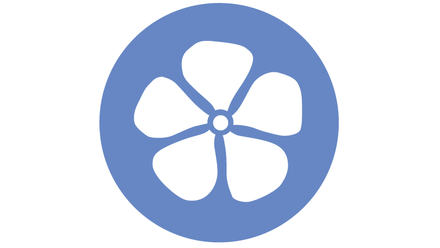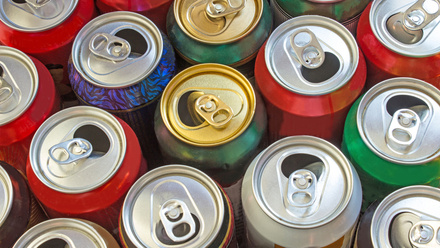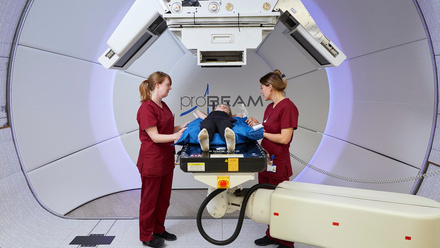Diets to combat various health complaints have been promoted for many years. These diets may be alternative, i.e. used to replace usual medical treatment, or complementary, i.e. used in conjunction with medical treatment. Since the growth of the internet and the rise in social media such diets have grown in popularity and are reaching a wider audience.
The BDA Oncology Specialist Group has recently produced several resources including a Myth Busting resource for dietitians available on the Oncology Specialist Group webpage and a patient information booklet on dietary myths and cancer which is awaiting publication.
Understanding the who, why and how
A study by Garland et al1 of 316 cancer patients in the USA showed a number of demographic factors were significant in determining if people were more likely to follow a complementary or alternative diet:
- <65 years old
- Female
- Higher income
- Educated
- Breast cancer diagnosis most likely
- No correlation with cancer stage
People choose to follow complementary or alternative diets for a variety of reasons. They may hope to improve troublesome symptoms or treatment side-effects and improve their quality of life. They may seek to boost their immune system or enhance how effective their standard treatment is. They may even hope to cure their disease or reduce the risk of recurrence. Whatever the reason for following the diet, they may be seeking to gain some control over their situation and a sense of empowerment.
Results from a self-reported questionnaire in South Korea (2018)2 of 896 lymphoma patients showed that patients access information on diets through a variety of sources. In this study the majority of patients started a diet by themselves through prior knowledge and/or gaining the information through friends and family. Only 14% of patients reported discovering diets from online sources or the media and 12% from other patients.
Communication and counselling
Horneber et al, reported that 25% of patients disclose using complementary and alternative medicine (CAM) to their medical team – consequently, open and active communication is essential to begin this consultation.3 When counselling such patients, it is important to establish their understanding and beliefs regarding diets and their influence on cancer. If they are interested in or adhere to a cancer diet, their expectations and experiences should be explored. Any lack of knowledge or misconceptions should be discussed and the scientific evidence explained.4
A complete holistic patient assessment is key when discussing nutrition claims and diets with a patient to ensure a mutual understanding and respect aiding clear communication. Individuals have often taken time to research the proposed diet and come armed with knowledge and convincing arguments often based on “pseudoscience” and promoted by persuasive advocates. You may feel confident in answering their queries but, if not, you are not alone. Only a minority of therapists in oncology feel proficiently qualified to communicate with patients on CAM.5 Even for scientists and clinicians, the question of whether and how nutrition may influence cancer risk and prognosis is controversial as the available data is highly complex.
As a healthcare professional, you may find that your opinion on these subjects contrasts with that of the person seeking advice. It can be all too easy to present a negative argument against their use, but it is much better to present a more balanced, non-biased case based on the facts and to discuss these with your patient to allow them to make their own decisions. If a particular diet has no proven benefit but will cause no harm, then your role may be to support the individual to follow their wishes. This will in turn aid a better working relationship with your patient and they are then more likely to seek further advice from you.
Common dietary myths
There are numerous ‘anti-cancer’ diets and foods in the media and on the internet but some of the most common ones are below, in Table 1.
This summary cannot cover all dietary myths that you may encounter but it could be helpful to try empowering patients to question the credibility of the diet claims they are coming across. The below tips can help you guide a patient to check the credibility of a diet claim:
- Check the source – reputable sources can be medical journals, a reputable cancer charity, health professionals.
- What is the evidence for the diet based on? Large population intervention studies on people with cancer would be a good basis for a reputable diet.
- Is the diet being sold? Be careful if dietary products are being sold – the profit rather than the science may be driving any health claims.
- Diets highlighting only to eat a few foods only are unlikely to be balanced or healthy and may do damage overall.
A complete holistic patient assessment is key when discussing nutrition claims and diets with a patient to ensure a mutual understanding and respect aiding clear communication.
In conclusion we need to ensure we equip ourselves not only with the knowledge around these complementary and alternative diets but also with the skills to help guide patients through deciding what diet is appropriate for them.
Table 1
|
Dairy |
Myth: Hormones used in the production of milk promote hormone-related cancerous tumour growth. Facts:
|
|
Soya |
Myth: Isoflavones found in soy products have a similar chemical structure to the hormone oestrogen. Oestrogen can stimulate some cancers; therefore, it was thought foods containing isoflavones might have the same effect. Facts:
|
|
Alkaline |
Myth: An acidic environment promotes ill health whereas an alkaline environment is beneficial and promotes good health. It is claimed that the food you eat can affect the body’s pH and that as our blood is naturally alkaline (~pH 7.4) eating acid foods upsets the balance. Facts:
|
|
Sugar |
Myth: Sugar feeds cancer cells. Facts:
|
|
Supplements |
Myth: Complementary alternative medicines can increase survival and reduce recurrence, optimise treatment, alleviate side effects and boost immune system. Facts:
|
References
1 Garland S et al (2013) Complementary and alternative medicine use and benefit finding among cancer patients. Journal of alternative and complementary medicine. 19(11): 876-881.
2 Kim Ketal (2018) Use of complementary and alternative medicine by lymphoma survivors in South Korea; 33: 91-96
3 Horneber M et al (2012) How Many Cancer Patients Use Complementary and Alternative Medicine: A Systematic Review and Metaanalysis. Integrative Cancer Therapies. 11(3) 187–203
4 Heubner J et al (2014) Counseling patients on cancer diets: A review of the literature and recommendations for clinical practice. Anticancer Research 34: 39-48.
5 Frenkel M et al (2010) Communication in cancer care: Discussing complementary and alternative medicine. Interg Cancer Ther 9 (2): 177-185.




